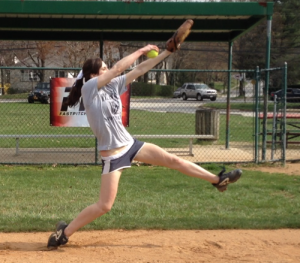Muscles and Exercises You Can’t Pitch Without: Part I
THIS IS WHAT YOU’VE BEEN WAITING FOR! Well, maybe this is just what I’ve been waiting to write. My three upcoming articles will identify how specific muscles and exercises can contribute to optimal pitching technique. For this series, I’m breaking down the windmill delivery into three general phases, for each of which strength training has different benefits: acceleration, transition, and deceleration. The first installment will review the critical mechanics of the acceleration phase.
Acceleration -This phase of the delivery sequence consists of the push (out of the load) from the rubber and subsequent drive through mechanics. Have you ever heard the saying “it’s not how you start, it’s how you finish”?. Well, it’s not exactly true for softball pitchers. How you start DETERMINES how you finish when it comes to windmill pitching. Here’s why:
- An explosive push from the rubber is executed by exhausting hip, knee, and ankle extension. This means the glutes, hamstrings, quadriceps, and calf muscles contract fully to push away from the rubber and propel the athlete toward homeplate.
- Full extension of the drive leg propels the lower trunk ahead of the torso, resulting in optimal vertical stacking throughout the delivery.
- Full extension of the drive leg allows for forward momentum to be maintained longer, which increases stride length, and allows time for the upper body to separate behind and away from the lower body (tracking and vertical stacking). Not to mention, this increases velocity.
- The most important physical capacity of the acceleration phase is hip extension via strong glutes and abdominals. (The abs don’t extend the hip, but they secure the pelvis, to which the gluteal muscles are anchored and harness their strength from).
- If the drive hip does not complete its extension due to weak core and glute strength, dynamic posture is shifted forward and the athlete is unable to “stay back” throughout the delivery.
- If the drive hip does not complete its extension, the lower back arches, shoulders shrug, and head remains forward (the athlete might actually look up at release). This leads to mechanical inefficiency, technical inconsistency, and eventually injury.
So you might be asking “WHAT THE HECK IS HIP EXTENSION?!”. Here’s video blog in which I explain what hip extension is while attempting to demonstrate how it contributes to pitching performance.
*UPDATE* – Here is a video of a circuit of exercises designed to improve hip extension and core strength!
